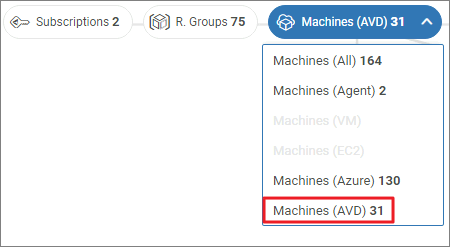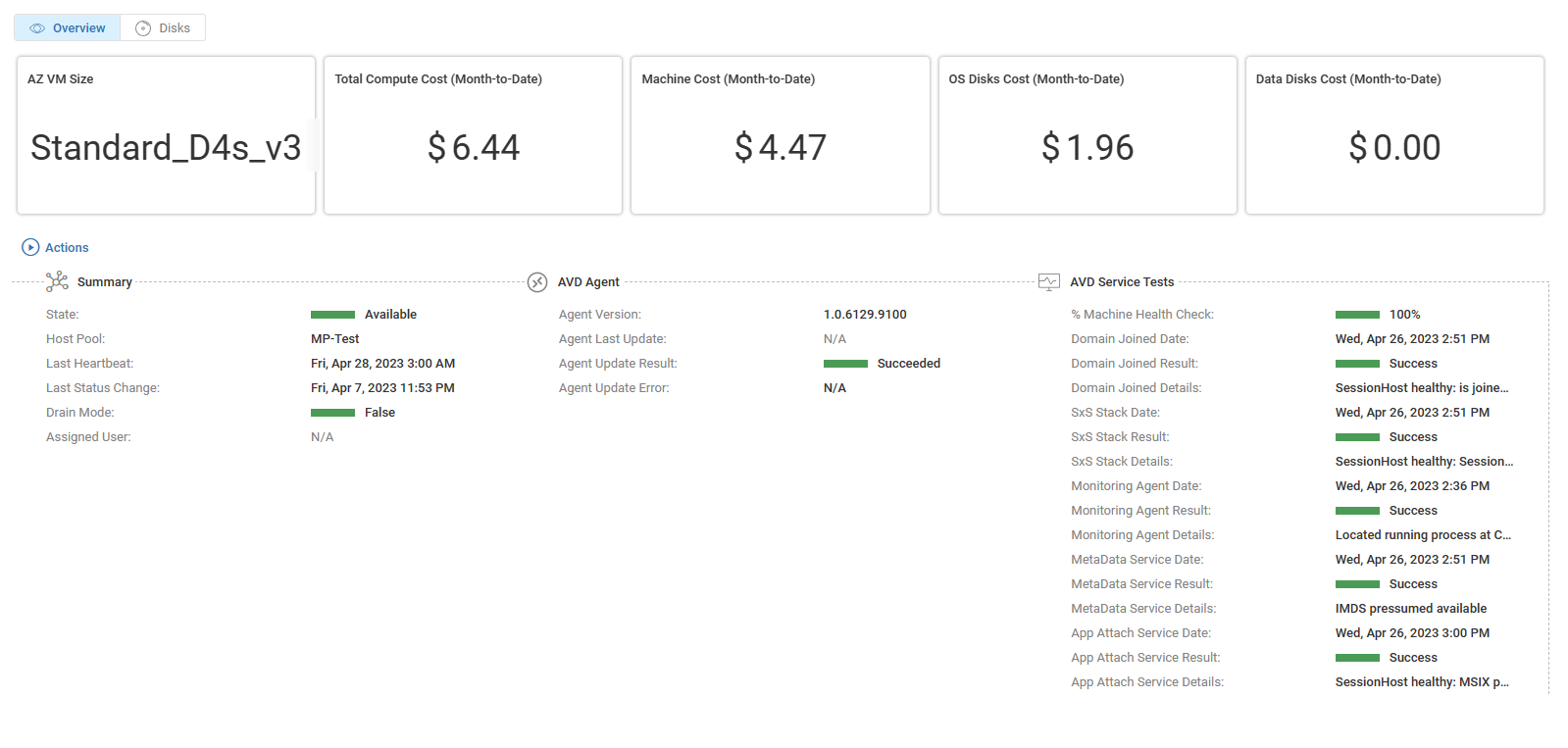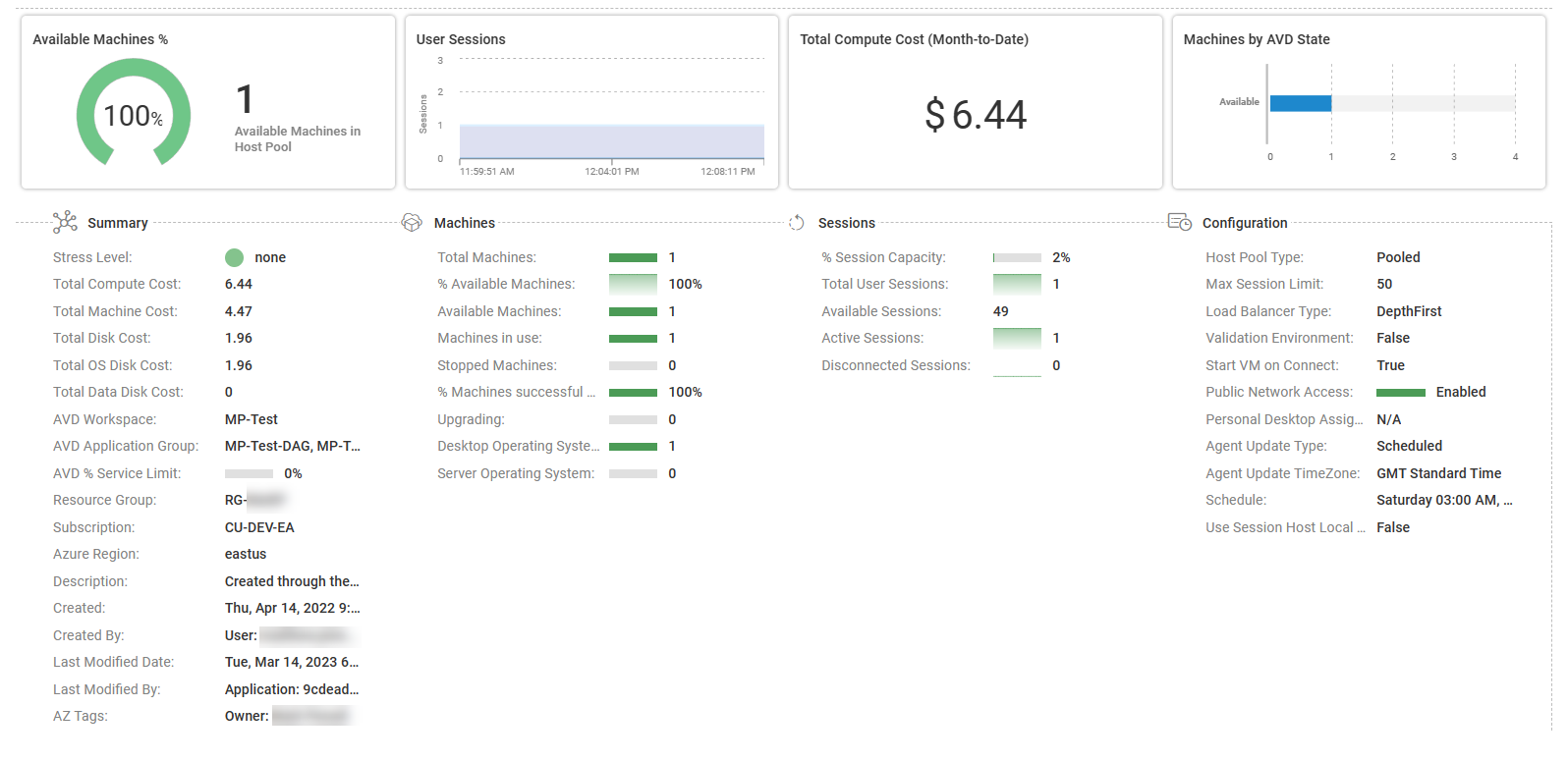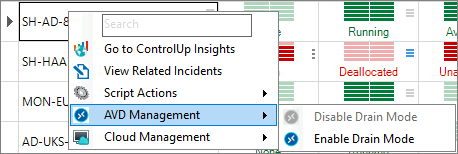ControlUp Real-Time DX Console includes built-in support for Azure Virtual Desktop (AVD), Microsoft’s cloud-based VDI service. In the following article we explain the benefits of using our AVD integration and how you can monitor and manage your AVD environment from our VDI App.
Benefits
Integrating AVD with our Real-Time DX Console offers you the following advantages:
Real-Time monitoring of your AVD host pools, session hosts, workspace or application groups.
Large set of AVD metrics for creating triggers and script actions.
Extended cost overview of your AVD resources.
AVD management actions and script actions.
Advanced Load Balancer to handle a large amount of Azure API requests.
Automate your AVD session hosts that run FSLogix.
From version 9.1 and higher, you can break down your cloud data connections with the Real-Time DX Console.
Prerequisites
The Azure subscription under which your AVD environment is deployed must be connected to ControlUp. Read the instructions how to add an Azure subscription to ControlUp here.
In addition to the standard Azure roles, make sure the Service Principal is granted the Desktop Virtualization Contributor role.
Recommendation
To fully utilize the AVD monitoring capabilities, we strongly recommend you install the ControlUp Agent on AVD session hosts. This will enable you to utilize all agent features, including creating triggers and script actions that require a non-REST API approach. To connect to the console, you must install a ControlUp Monitor with a public FQDN and Network Security Group (NSG) that your AVD session hosts can access.
How To Access AVD Data
Unlike other ControlUp extensions such as Omnissa Horizon (formerly VMware Horizon) or Citrix Virtual Apps and Desktops, Microsoft AVD doesn't come with a dedicated extension. The main advantage is that you don't have to worry about adding additional credentials to ControlUp. You can use the Service Principal that you already use to connect your Azure subscription to ControlUp.
VDI App
In the VDI App, you can filter AVD machines by using the Topology view. Under the Machines dropdown, you can find a new entry AVD. In this example, you can see that we have 31 AVD session hosts in 75 resource groups connected to the Monitor.
If you click a session host, you will find an overview that shows you more detailed information about the selected session host

To get more information on a host pool, navigate to the specific host pool in the topology view:
This opens a dashboard that shows detailed host pool information:

Real-Time DX Console
In the console, focus on the resource group under which your sessions host are located. To access your AVD session hosts, double-click on AVD Machines to further drill down to the AVD machines in this resource group.
AVD Metrics
The AVD integration comes with dozens of metrics which you can find here.
AVD Presets
The Real-Time DX Console includes pre-built presets specifically designed for AVD columns. Like other presets, AVD presets include a set of AVD metrics designed to help you obtain customized information about your AVD environment, including:
AVD Machines
AVD Machines No Agent
AVD Remote Apps
AVD User Sessions
Built-In AVD Actions
You can enable or disable drain mode for a session host by right-clicking the Session Host > AVD Management.